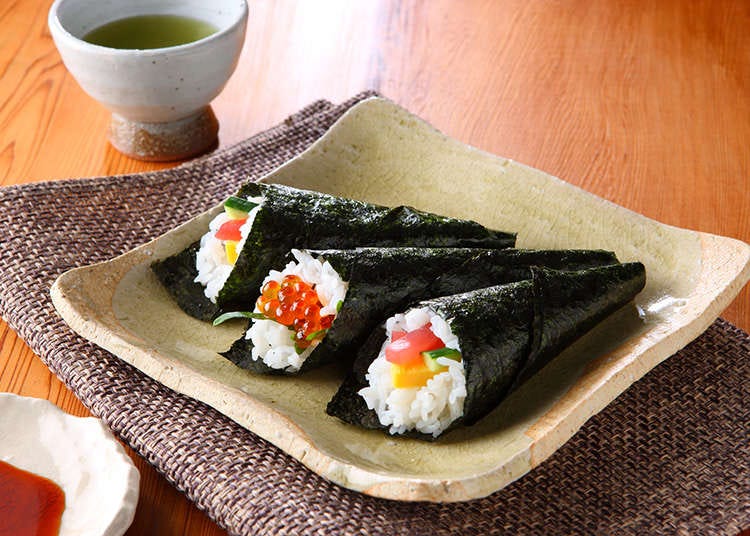The History of Japanese Cuisine
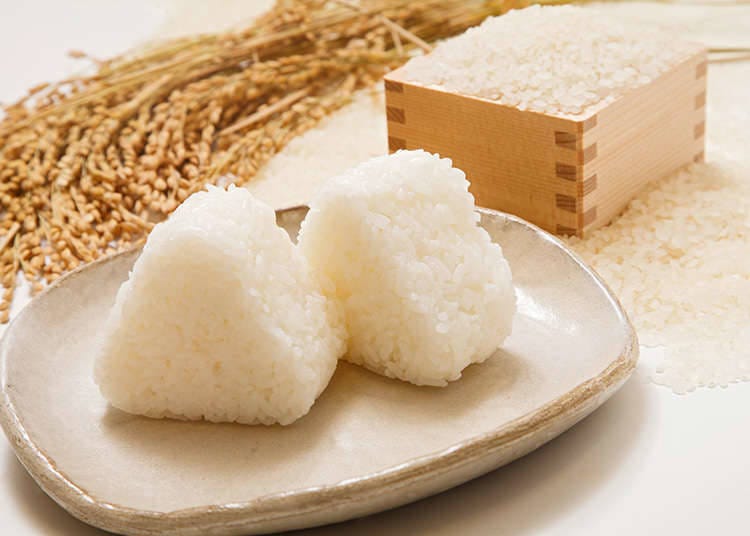
Rice cultivation was already occurring in Japan by the 3rd century B.C., and the people were already finding ways to cook. Through Buddhism, fried food and tea also spread to Japan, and karaage(fried chicken) and fermented items such as natto (fermented soy beans), were being eaten over 1000 years ago. By the Edo period, local food such as the lucky "Edo Cuisine" was developed. The culture of not eating meat changed with the influence of western cultures, and more and more original Japanese dishes were created.
The "One Soup, Three Side Dishes" Custom
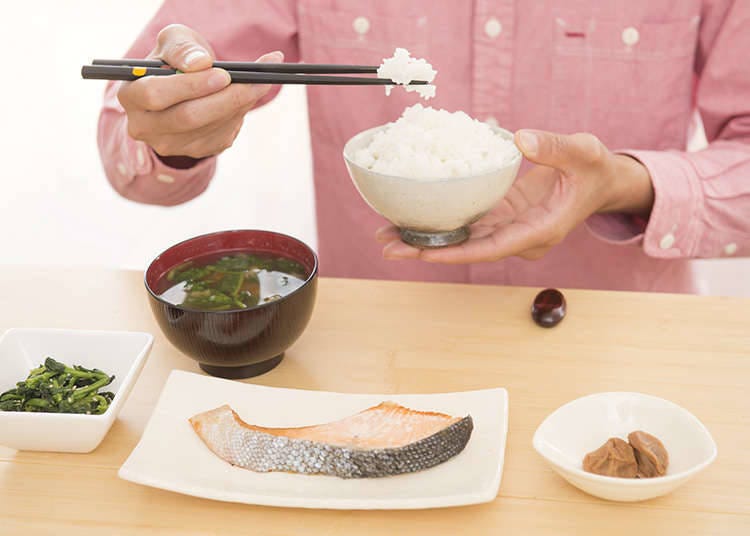
The standard form of Japanese cuisine is a menu that incorporates one soup and three side dishes. This menu is comprised of one soup dish, one main dish, and two side dishes. The main dish is a dish with fish, meat, or eggs. The side dishes mainly include those made from vegetables or beans, such as "tofu". With this system, you can eat a variety of food in just one meal.
Seasonal Foods
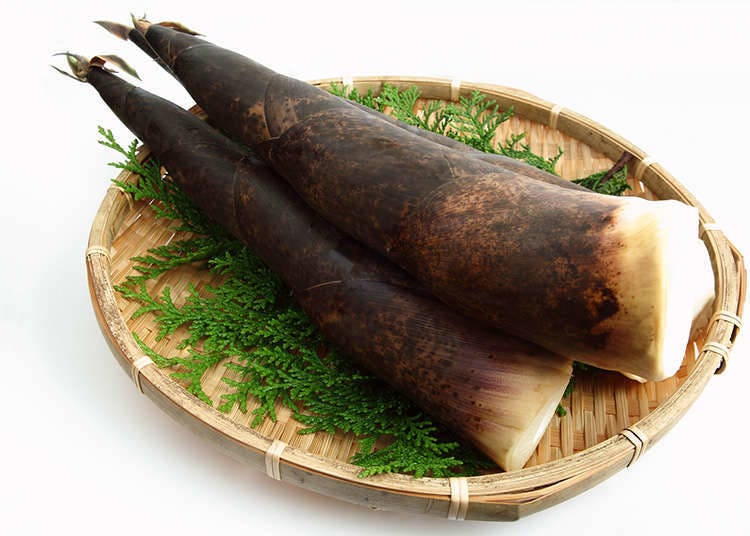
Japanese people have a knack for matching food with each season. Bamboo shoots and Spanish mackerel are best enjoyed in spring. In Summer, cucumbers and sweetfish are recommended. In fall, persimmons and saury are often eaten, and in winter, Chinese cabbage and amberjack are some of the foods that people look forward to.Japanese cuisine is loved for its dishes that bring out the taste of seasonal ingredients.
Multifaceted Cuisine for Every Season and Event
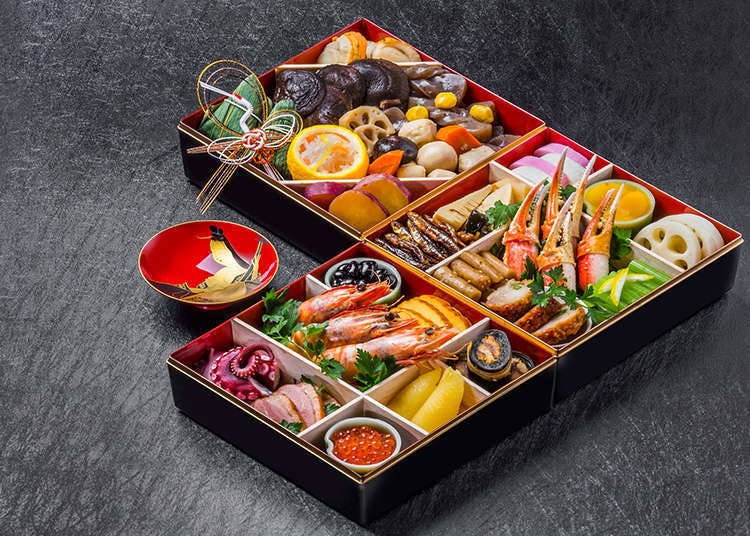
Seasonal and event-related food are very important in Japanese cuisine. On New Year's Day, people eat special New Year's food such as "osechi" (a special New Year's bento) and "ozoni" (a type of soup only eaten over the New Year). There are many other Japanese dishes that go with particular seasons, events, or holidays. For example, on December 21st, the day of winter solstice, people eat Japanese pumpkins to prevent colds. Also, on special occasions, a celebratory "sekihan," red rice made from glutinous rice and red beans, is prepared and eaten.
*Prices and options mentioned are subject to change.
*Unless stated otherwise, all prices include tax.
Popular Tours & Activitiess
Recommended places for you
-

Fine Dining on Rails? Japan Announces Stunning NEW 'Laview' Restaurant Train
-

10 Must-Buy Cosmetics at Don Quijote (2025 Edition)
-
Ad

Just 2 Hours from Tokyo! Enjoy Ibaraki’s Breathtaking Ocean Views, Flowers & Autumn Leaves on Private Tours
-
Ad

Unraveling the History of the Hidden Christians from Goto City, Nagasaki Prefecture, located in Kyushu
by: Yohei Kato
-

The Ultimate Guide to Mitsui Outlet Parks in Japan (2025 Edition) - Popular Tax-Free Malls & Coupon Info for Travelers
-

See Asakusa and Tokyo Skytree® in a New Light at the "Také Akari" Festival (Winter 2025-2026)
by: Guest Contributor
-

Easy Oyakodon Recipe: How to Make Japan’s Definitive Donburi Dish!
-

Dining in Osaka: Best Restaurants for Yakiniku, Sushi, Okonomiyaki & More
by: WESTPLAN
-

Sapporo Beer Museum Experience: Sample Draft Beers, Chow Down on Mutton BBQ!
-

What to Eat in Japan - 12 Unique Japanese Foods You MUST Try At Least Once!
-

Universal Studios Japan: Guide to Osaka's Giant Theme Park Attractions!
by: WESTPLAN
-

Sapporo New Chitose Airport (CTS): Complete Guide to Restaurants, Souvenirs, Shopping & More!
- #best sushi japan
- #what to do in odaiba
- #what to bring to japan
- #new years in tokyo
- #best ramen japan
- #what to buy in ameyoko
- #japanese nail trends
- #things to do japan
- #onsen tattoo friendly tokyo
- #daiso
- #best coffee japan
- #best japanese soft drinks
- #best yakiniku japan
- #japanese fashion culture
- #japanese convenience store snacks













